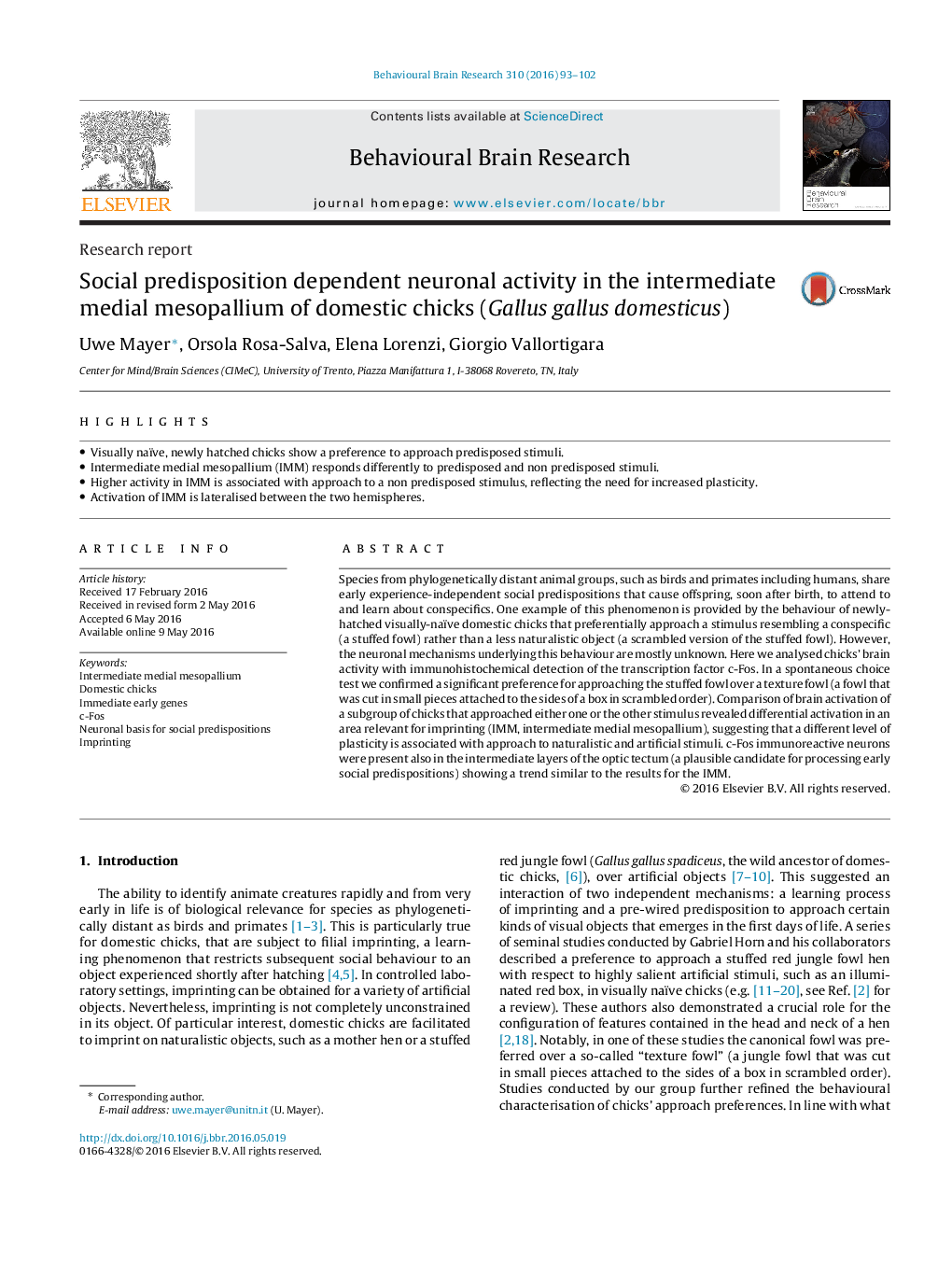| Article ID | Journal | Published Year | Pages | File Type |
|---|---|---|---|---|
| 4312135 | Behavioural Brain Research | 2016 | 10 Pages |
•Visually naïve, newly hatched chicks show a preference to approach predisposed stimuli.•Intermediate medial mesopallium (IMM) responds differently to predisposed and non predisposed stimuli.•Higher activity in IMM is associated with approach to a non predisposed stimulus, reflecting the need for increased plasticity.•Activation of IMM is lateralised between the two hemispheres.
Species from phylogenetically distant animal groups, such as birds and primates including humans, share early experience-independent social predispositions that cause offspring, soon after birth, to attend to and learn about conspecifics. One example of this phenomenon is provided by the behaviour of newly-hatched visually-naïve domestic chicks that preferentially approach a stimulus resembling a conspecific (a stuffed fowl) rather than a less naturalistic object (a scrambled version of the stuffed fowl). However, the neuronal mechanisms underlying this behaviour are mostly unknown. Here we analysed chicks’ brain activity with immunohistochemical detection of the transcription factor c-Fos. In a spontaneous choice test we confirmed a significant preference for approaching the stuffed fowl over a texture fowl (a fowl that was cut in small pieces attached to the sides of a box in scrambled order). Comparison of brain activation of a subgroup of chicks that approached either one or the other stimulus revealed differential activation in an area relevant for imprinting (IMM, intermediate medial mesopallium), suggesting that a different level of plasticity is associated with approach to naturalistic and artificial stimuli. c-Fos immunoreactive neurons were present also in the intermediate layers of the optic tectum (a plausible candidate for processing early social predispositions) showing a trend similar to the results for the IMM.
